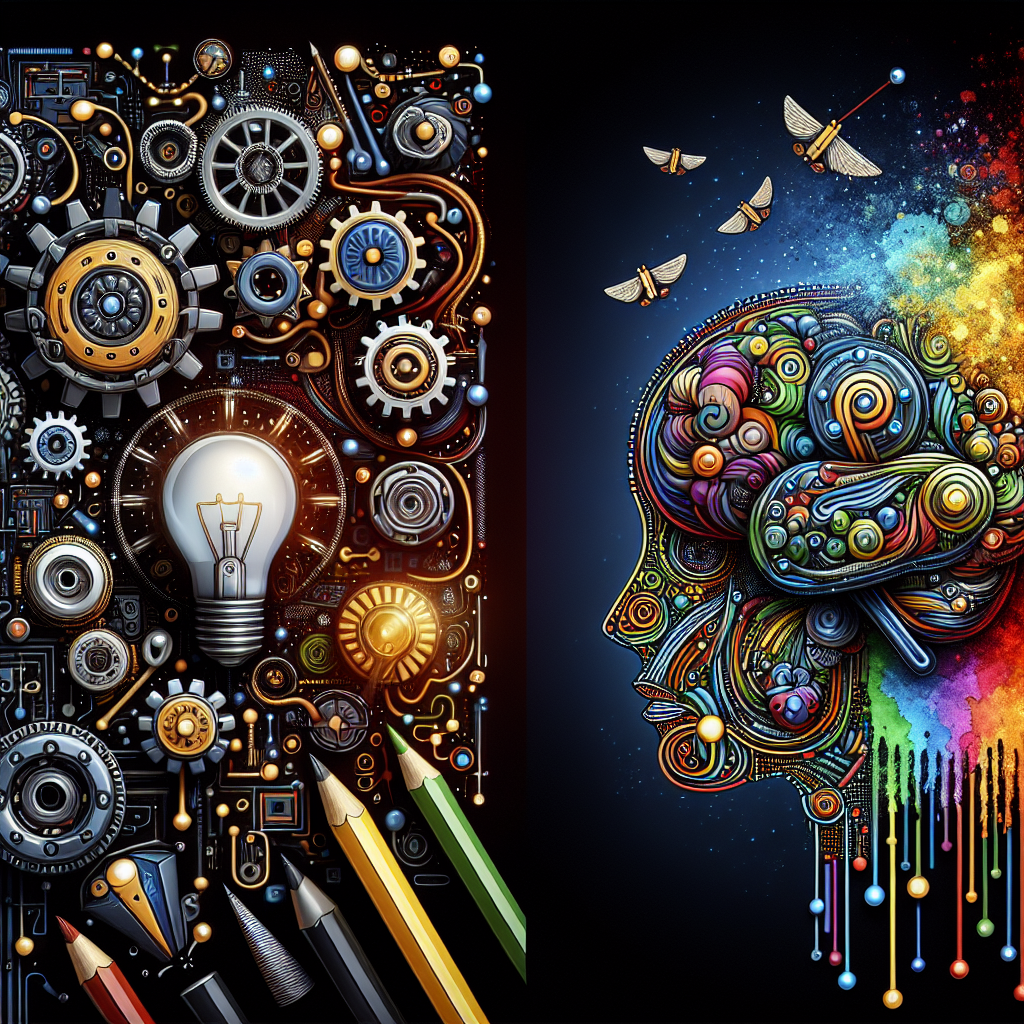Artificial Intelligence (AI) has become an integral part of our daily lives, from virtual assistants like Siri and Alexa to recommendation algorithms on streaming platforms like Netflix and Spotify. But can AI also inspire creative thinking? Can machines truly be creative? In this article, we will explore the role of AI in fostering creativity and how it can push the boundaries of what we consider to be creative thinking.
AI and Creativity
Creativity is often seen as a uniquely human trait, involving the ability to come up with novel ideas, solutions, and expressions. It is the driving force behind innovation and artistic expression. So, can AI, a machine that operates based on algorithms and data, really be creative?
The answer is not straightforward. AI can be programmed to generate new ideas, designs, and music that mimic human creativity. For example, AI-powered tools like DeepDream and Aiva have been used to create visually stunning artworks and compose musical pieces. These tools analyze vast amounts of data to identify patterns and generate new content based on these patterns.
While AI can certainly produce creative outputs, the question of whether it can truly be creative in the same way humans are is still up for debate. AI lacks the emotional intelligence and consciousness that drive human creativity. It cannot experience the world in the same way humans do, with all its complexities and nuances. AI can only generate content based on the data it has been trained on, without truly understanding the meaning or context behind it.
However, AI can still inspire creative thinking in humans by providing new perspectives and ideas that we may not have considered otherwise. By analyzing and synthesizing vast amounts of data, AI can identify patterns and connections that humans may overlook. This can spark new ideas and inspire novel approaches to problem-solving and artistic expression.
AI as a Tool for Creativity
One of the ways AI can inspire creative thinking is by acting as a tool for artists, designers, and creators. AI-powered tools can assist creatives in generating ideas, refining designs, and exploring new possibilities. For example, designers can use AI to create generative art, where the machine generates new artworks based on predefined parameters set by the artist. This can lead to unexpected and innovative results that push the boundaries of traditional art forms.
AI can also be used to enhance the creative process by automating repetitive tasks and freeing up time for artists to focus on more complex and imaginative tasks. For example, AI-powered editing tools can help photographers and filmmakers enhance their images and videos, allowing them to experiment with different styles and effects without spending hours on manual editing.
Additionally, AI can help creators overcome creative blocks by providing inspiration and generating new ideas. By analyzing trends and patterns in a particular field, AI can suggest new directions and approaches for artists to explore. This can be especially helpful for creators who are feeling stuck or uninspired and need a fresh perspective to reignite their creativity.
Challenges of AI in Fostering Creativity
While AI has the potential to inspire creative thinking, it also presents challenges and limitations that need to be addressed. One of the main concerns is the reliance on algorithms and data that may bias the outputs generated by AI. If the data used to train the AI is skewed or limited, it can lead to biased and unoriginal results that do not truly reflect the diversity and complexity of human creativity.
Another challenge is the lack of emotional intelligence and intuition in AI. Human creativity is often driven by emotions, experiences, and intuition that cannot be replicated by machines. AI may struggle to understand the deeper meanings and subtleties behind creative expressions, leading to superficial and uninspired outputs.
Furthermore, there is the risk of AI replacing human creativity instead of inspiring it. As AI becomes more advanced and capable of generating creative content, there is a fear that human artists and creators may be sidelined in favor of machines. This raises ethical concerns about the role of AI in the creative process and the impact it may have on the livelihoods of human creators.
FAQs
Q: Can AI truly be creative?
A: AI can generate creative outputs based on patterns and data it has been trained on, but it lacks the emotional intelligence and consciousness that drive human creativity. While AI can simulate creativity, it may not be truly creative in the same way humans are.
Q: How can AI inspire creative thinking?
A: AI can inspire creative thinking by providing new perspectives and ideas that humans may not have considered otherwise. By analyzing vast amounts of data, AI can identify patterns and connections that can spark new ideas and approaches to problem-solving and artistic expression.
Q: What are the challenges of using AI in fostering creativity?
A: Some of the challenges of using AI in fostering creativity include bias in the data used to train the AI, the lack of emotional intelligence and intuition in machines, and the risk of AI replacing human creativity instead of inspiring it. Ethical concerns also arise about the role of AI in the creative process and its impact on human creators.
In conclusion, while AI may not be truly creative in the same way humans are, it can still inspire creative thinking by providing new perspectives and ideas that push the boundaries of traditional thinking. By using AI as a tool for creativity, artists and creators can explore new possibilities and enhance their creative process. However, challenges and limitations exist that need to be addressed to ensure that AI fosters creativity in a responsible and ethical manner.

